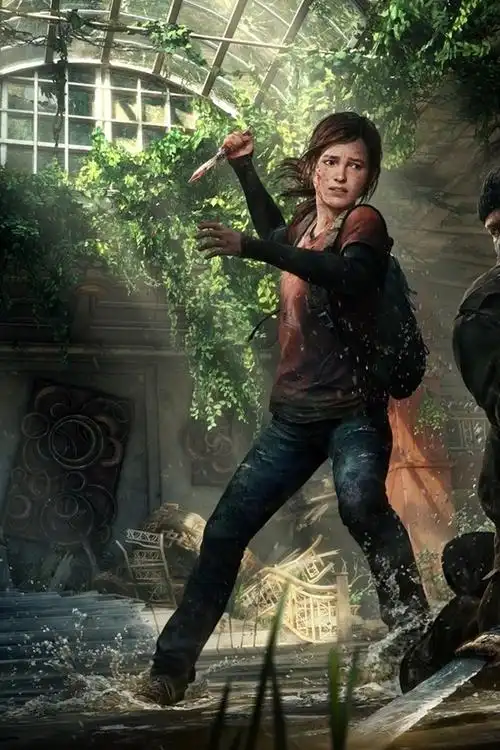Title: Descending Deeper: The Unsettling Allure of 'Snake Pit Shelter Sign Installer Simulator VR - Place Missions DLC'
The virtual reality landscape is a bizarre and wonderful ecosystem, teeming with hyper-realistic combat simulators, serene meditation apps, and everything in between. Yet, few experiences capture the specific, granular dread of a mundane task performed in a profoundly unsettling environment quite like the original Snake Pit Shelter Sign Installer Simulator VR. It was a masterpiece of existential horror disguised as a blue-collar job simulator. Now, with the release of the ‘Place Missions’ DLC, developers Niche Simulations have not merely expanded the game; they have weaponized its core premise, transforming a claustrophobic nightmare into a sprawling, psychological odyssey.
For the uninitiated, the base game tasked players with a single, Sisyphean goal: navigate the decaying, pitch-black corridors of an abandoned nuclear fallout shelter—the eponymous ‘Snake Pit’—and install a series of badly needed safety and directional signs. The horror wasn’t from jump scares or monsters, but from the oppressive silence, the unreliable flicker of your hardhat’s headlamp, the groaning of the infrastructure, and the ever-present, unnerving graffiti that suggested you were not the first to attempt this job, nor would you be the last. The ‘Place Missions’ DLC takes this foundational anxiety and layers it with a new, more insidious form of psychological pressure: purpose.
The DLC introduces a mysterious benefactor, communicating through a crackling, vintage walkie-talkie found at the start of the new campaign. This entity, known only as “The Curator,” has a different objective. You are no longer just an installer for a vague, defunct bureaucracy. You are an exhibitor. The Curator’s goal is to turn the Snake Pit Shelter into a museum, a preserved monument to its own paranoia and failure. Your new missions involve placing not just utilitarian signs, but specific artifacts, informational plaques, and dioramic displays in exact locations specified by your unseen guide.
This shift from practical installation to curated placement is a genius narrative and mechanical twist. Where before you might hastily nail a “TO EXIT” arrow onto a damp wall, now you are carefully positioning a glass case containing a perfectly preserved—and utterly inexplicable—‘60s-era packed lunch on a specific rusted gurney in the infirmary. You are arranging mannequins in poses of casual conversation in the rec room, their featureless faces staring into the void. You are mounting plaques that offer chillingly dry historical tidbits: “Approximate site of the ‘Whisper Consensus’ of 1972. Note the persistent drop in ambient temperature.”
The act of “placing” instead of “installing” demands a different kind of engagement. It’s slower, more deliberate, and infinitely more creepy. You spend minutes ensuring a display of ration tins is perfectly aligned, your light panning across the labels, all while the environment breathes around you. The Curator’s feedback is sporadic and often cryptic. “A little more to the left… no, my left,” they might say, their voice tinged with static. Or, more unsettlingly, “Yes. Yes, that’s where it happened. Perfect.” You become an active participant in constructing a narrative you don’t understand, arranging the pieces of a puzzle whose full picture is terrifying to comprehend.
The DLC brilliantly expands the shelter’s geography, unlocking sectors that were previously just ominous, sealed bulkheads. The new areas are thematic and deepen the lore exponentially. The “Hydroponics Wing” is a cavernous space where mutated, phosphorescent plant life now claws its way out of broken tanks, casting eerie shadows. The “Data Processing” room is a forest of dead mainframes and scattered punch cards, with a low, electrical hum that seems to sync with your own heartbeat. The “Oversight Lounge,” a panopticon-like room with a one-way mirror overlooking the barracks, is perhaps the most chilling, forcing you to place items while feeling the phantom weight of a thousand unseen eyes.
The VR interactivity is pushed to its limits. The act of unscrewing a panel to access a hidden nook for a specific exhibit requires two-handed precision. Dusting off a surface before placing a item becomes a ritual. Your virtual hands might tremble as you use a spirit level to ensure a portrait of the shelter’s long-dead, stern-faced director is hanging straight, his eyes seeming to follow you across the room. The haptic feedback from the controllers sells every texture, from the cold sweat on a pipe to the gritty grime on a forgotten doll you’ve been instructed to place on a child’s bed.
‘Place Missions’ is not for everyone. It is an exercise in sustained, low-frequency dread. There is no combat, no running, only the slow, methodical, and deeply unnerving process of turning a tomb into a tribute. Its horror is intellectual and environmental, a slow-burn fear that seeps into your bones. It’s the horror of implication, of history, and of becoming a pawn in a game designed by a ghost. It is, without a doubt, one of the most original and effectively disturbing VR experiences ever created, a DLC that doesn’t just add content but completely re-contextualizes and elevates the original game into a profound and unforgettable work of interactive horror.

















